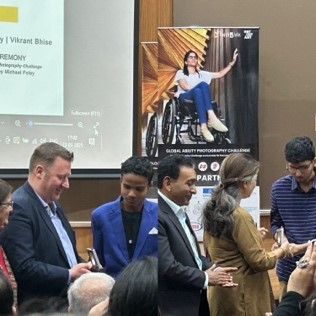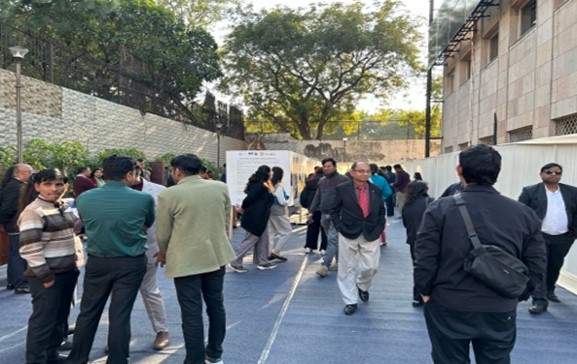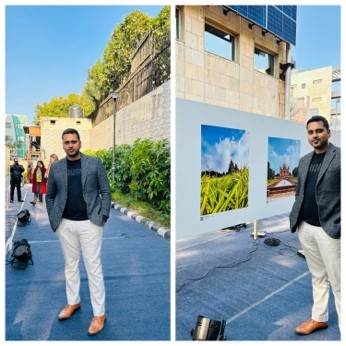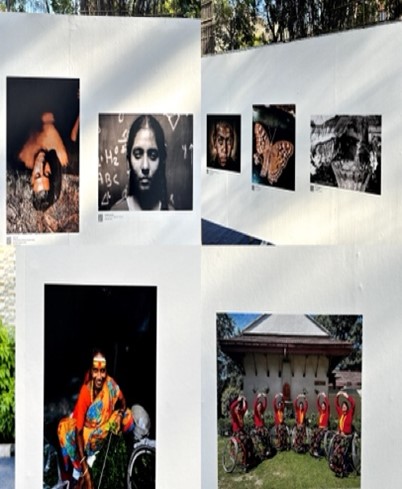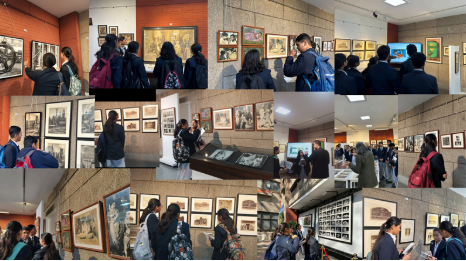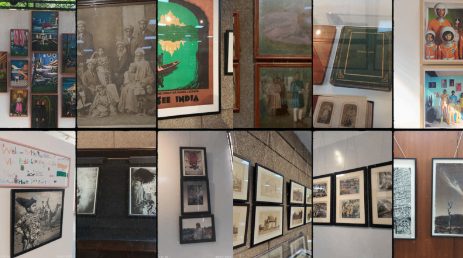Celebrating Inclusion and Creativity: Our School's Representation at the 3rd Global Ability Photography Challenge (GAPC) Awards
Date of visit: 23 January 2025
Location: UNESCO, New Delhi
Attendee: Mr. Nilesh Roy
Bal Bharati School participated at the prestigious Exhibition Opening and Award Ceremony for the 3rd edition of the Global Ability Photography Challenge (GAPC), organized by Youth4Jobs, UN India, and UNESCO. This event was an inspiring and transformative experience, highlighting resilience, creativity, and inclusion.
A Powerful Celebration of Talent and Determination
The event showcased the incredible talent and perseverance of individuals from diverse backgrounds. Among the 1,000 global entries, four winners with disabilities stood out, demonstrating the indomitable human spirit. Their achievements remind us that challenges can be overcome with determination and creativity.
A particularly touching moment was the recognition of a 75-year-old awardee from Tamil Nadu, proving that passion has no age limit. Another memorable story came from a winner from Andhra Pradesh, who shared that this competition enabled him to take his first-ever flight, a milestone made possible by his talent and dedication.
Esteemed Guests and Inspirational Messages
The event was honoured by the presence of distinguished guests, including the Secretary of the Department of Empowerment of Persons with Disabilities and the Chairperson of United Nations India. Their inspiring words reinforced the importance of fostering inclusivity and empowering diverse talents across the globe.
Impact on Our School and Students
This experience has profoundly impacted Bal Bharati School, reigniting a lifelong passion for photography and creative expression. Witnessing such exceptional talent and hearing the participants’ stories has inspired a renewed commitment to celebrating diversity and ability through art and storytelling.
Looking Ahead
We are immensely proud to have been part of this prestigious event and look forward to sharing the inspiration and lessons learned with Bal Bharati School community. This experience has reinforced our belief in the power of creativity and inclusion, and we hope to continue supporting initiatives that highlight these values.
We extend our heartfelt gratitude to the organizers for this opportunity and to Bal Bharati School community for their support. Together, let us continue to celebrate diversity, resilience, and artistic expression!
A Visit to the Tulip Research Centre at India Habitat Centre
Date of visit: 28 January 2025
Location: India Habitat Centre, Lodhi Garden, New Delhi
Attendees: Class Teacher – Mr. Nilesh Roy & Class XI-D
Visit to the Tulip Research Centre for India Studies (T.R.I.S.) at the India Habitat Centre, New Delhi. This visit was a part of an academic initiative aimed at deepening students' understanding of Indian history and culture through an exhibition on the history of photography in India.
Introduction
Education is most effective when it transcends the boundaries of textbooks and enters the realm of experiential learning. The visit to T.R.I.S. provided the students with a unique opportunity to explore India's past through an immersive and intellectually stimulating exhibition. The exhibition not only presented a collection of rare photographs and manuscripts but also facilitated engaging discussions on the influence of India’s historical narratives on contemporary perspectives.
About T.R.I.S.
The Tulip Research Centre for India Studies is a pioneering institution founded by Mr. Neville Tuli, committed to preserving and promoting Indian arts, humanities, and social sciences. The centre aspires to integrate traditional Indian knowledge systems with contemporary global academia, fostering an interdisciplinary approach to education.
The institution focuses on:
Preserving Indian Heritage – Documenting and safeguarding India’s rich cultural and intellectual traditions.
Fostering Academic Excellence – Encouraging rigorous research and critical thinking.
Enhancing Global Engagement – Positioning Indian knowledge systems in global discourses.
Promoting Multimedia Learning – Using visual and textual resources to create a dynamic educational experience.
Absorbing the Visual Narratives
The exhibition showcased a breath-taking collection of photographs and artefacts spanning India’s historical trajectory from the 1850s onwards. Students carefully observed these images, analysing their historical context, artistic elements, and social significance. This activity underscored the role of photography in preserving history and storytelling.
Interactive Discussions
One of the most enlightening aspects of the visit was a discussion with Mr. Neville Tuli, who shared insights on how India’s ancient philosophies continue to shape modern thought. The students engaged in meaningful conversations about history, perception, and knowledge, making the experience intellectually rewarding.
Access to Digital Resources
The students were also introduced to the T.R.I.S. website, which offers free access to specialized research materials, workshops, and programs. This online platform ensures that learning extends beyond the physical visit, providing an opportunity for continued engagement with historical studies.
Significance of the Visit
The visit to T.R.I.S. was not just an educational tour; it was an intellectual journey that instilled in students a deeper appreciation for India’s historical and cultural heritage. By bridging the gap between traditional knowledge and contemporary academic discourse, the visit encouraged students to think critically about history and its relevance to modern times.
Key takeaways from the visit included:
The ability to analyse and interpret historical visuals in a meaningful way.
An understanding of the evolution of photography as a historical documentation tool.
Exposure to India’s academic and cultural heritage in an interactive manner.
Reflections from Students
The experience had a profound impact on the students, sparking curiosity and admiration for history.
Manas Karol
“It was a really nice experience for me to go to TRIS, first the architecture held my breath because Indian Habitat Centre is designed in such a way that air always ventilates, and the building stays cool. Then, I really liked the pictures/ photography and the concept of ‘eye’ about perception and interpretation of different visuals. I learnt how we can see through our vision not our eyes and gain real knowledge. It was a remarkable and unforgettable experience for me.”
Anjali Bhaskar
“I had the privilege to visit the reputed TRIS for an exhibition on the history of photography in India since the 1850s. I was amazed by the collection of photos & manuscripts showcased there. This experience helped me inculcate the importance of our history to understand the wider perspectives of the present. It was a truly overwhelming experience!”
Conclusion
The visit to T.R.I.S. at the India Habitat Centre was a remarkable educational experience for the students of Class XI-D. It provided a platform for interactive learning, intellectual discussions, and deep historical appreciation. Through the exhibition and discussions, students gained new perspectives on history, art, and cultural preservation. Such visits play a crucial role in holistic education, ensuring that students not only learn history but also experience it in a way that remains with them for a lifetime.
A special thanks to:
Nilesh Roy(Class Teacher)
Prarabdh Gautam
Manas Karol
Anjali Bhaskar
Nandani Sharma
This visit has left an indelible mark on the students, inspiring them to engage more deeply with history and its multifaceted interpretations.
Report on Visit to the Tulip Research Centre at India Habitat Centre

